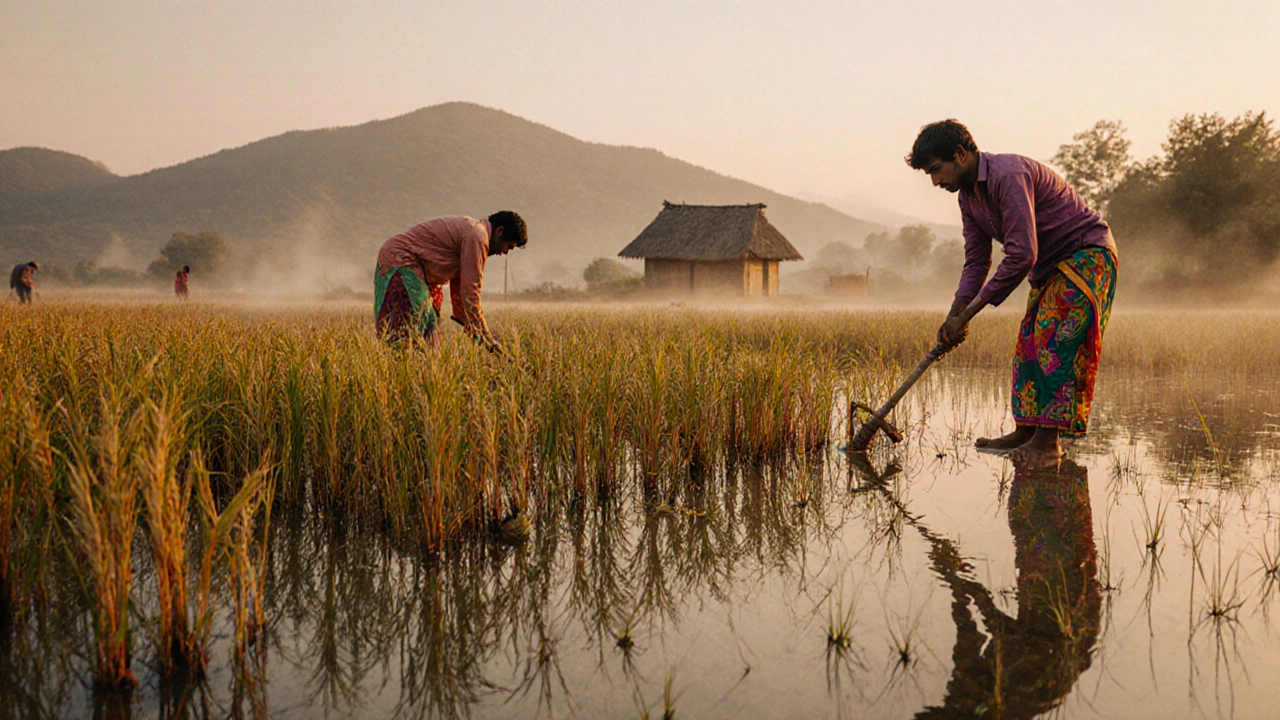Rice doesn't come back every year-it's an annual crop that must be replanted each season. Learn why rice can't regrow, how farmers manage yearly planting, and what perennial rice research means for the future.
Rice Growth Cycle: Understanding Each Stage for Better Harvests in India
When you grow rice, a staple cereal grain that feeds over half the world’s population, especially in India where it’s grown on more than 44 million hectares. Also known as paddy, it’s not just food—it’s the backbone of rural livelihoods, seasonal rhythms, and cultural traditions across the country. The rice growth cycle isn’t a single event. It’s a sequence of phases, each demanding different care, water, and timing. Skip one step, and you risk poor tillering, weak panicles, or even total crop failure. This isn’t theory—it’s what farmers across Uttar Pradesh, West Bengal, and Tamil Nadu live by every season.
Understanding the rice growth cycle, the full timeline from seed to harvest, typically lasting 90 to 180 days depending on variety and climate helps you plan better. It breaks into four clear stages: germination and seedling, vegetative, reproductive, and ripening. During germination, seeds soak in water for 24–48 hours before sowing. In the seedling stage, young plants need shallow water and no weeds. Then comes the vegetative phase—this is when tillers form, and the plant builds its structure. Too little water here? Fewer grains. Too much? Root rot. The reproductive stage is when the panicle emerges. That’s when nutrient demand peaks, especially nitrogen and potassium. Finally, ripening: the grains fill, turn golden, and harden. This is when you stop watering and let the field dry out. Mistake this step, and your rice won’t store well.
The rice farming India, a system shaped by monsoon rains, irrigation canals, and traditional knowledge passed down for generations doesn’t follow a one-size-fits-all calendar. In the Kharif season, farmers plant in June-July to ride the monsoon. In the Rabi season, they use tube wells and canals, planting in November for a January harvest. Then there’s the summer crop—boro rice—grown with full irrigation in the north. Each variation changes the timing of every stage. You can’t treat a rice field in Odisha the same way you do one in Punjab. That’s why knowing your local climate and soil matters more than any generic guide.
What makes this cycle work isn’t just water and sun. It’s timing. It’s observation. It’s knowing when the leaves start to yellow before the panicle forms, or when the field should be drained to trigger grain filling. The posts below pull from real experiences—farmers who fixed stunted growth by adjusting water levels, gardeners who grew rice in containers, and experts who broke down how soil amendments affect yield. You’ll find tips on seed selection, how to spot nutrient deficiencies mid-cycle, and why some varieties mature faster than others. No fluff. No theory without practice. Just what works on Indian soil, in Indian weather, for Indian growers.
